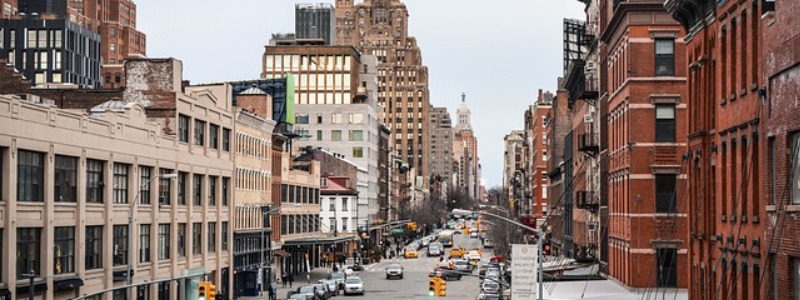Situated along the Hudson River, the Meatpacking District is a mixed-used neighborhood in Lower Manhattan. Some of the top attractions in this district include the Whitney Museum of American Art and The High Line. High-end retail, fine dining, and cafes make up the vibrant urban character of this trendy district. Click to book your Meatpacking District/Chelsea Market/The Highline walking tour.
Meatpacking District Attractions and Sites of Interest
The southern portion of the High Line terminates in the Meatpacking District. Originally a historic railroad, this infrastructure has been converted into an urban green space. Beautiful plants, shrubs, and flowers line the walkways of the elevated High Line. Some points along this park also offer panoramic views of the Hudson River and the surrounding skyline. The High Line runs for just less than 1.5 miles between the Meatpacking District and the Chelsea neighborhood. Small gardens, art installations, and pedestrian-friendly amenities are installed along the wooden promenades and boardwalks.
The most notable attraction in the Meatpacking District is the Whitney Museum of American Art. Based in the Upper East Side for decades, this museum relocated to this waterfront area in 2015. Having a modern facade that was designed by Renzo Piano, the organization showcases the works of the most prolific American artists during the 20th and 21st centuries. The galleries include paintings by Edward Hopper, Max Weber, Jackson Pollock, George Bellows, and other dozens of other renowned artists.

You’ll also find artwork by international masters, such as Willem de Kooning. Realism and Expressionism are some of the dominant art genres that are on display at the Whitney Museum of American Art. The outdoor terrace at the museum offers breathtaking views of the Hudson River, New York Harbor, and the skyscrapers of Lower Manhattan.
History of Meatpacking District
The area that’s currently known as the Meatpacking District was lined with elegant row houses in the early 19th century. The first residents were successful merchants and other professionals who wanted to escape the rapidly growing development in Lower Manhattan.

By the early 20th century, the district was home to hundreds of slaughterhouses. Consequently, the Meatpacking District was named after this thriving industry that supplied local grocery stores and restaurants with packaged meat. Most of the slaughterhouses shut down after World War II, and the district fell into decline. Just like in many former commercial areas in NYC, gentrification has significantly boosted the Meatpacking District in recent years.
Location and Transportation
The Hudson River flows past the western flank of the Meatpacking District in Lower Manhattan. Supporting traffic in only one direction, Hudson Street, Gansevoort Street, and 9th Avenue mark the boundaries of this small neighborhood. The northern edge of the Meatpacking District is defined by 14th Street, which accommodates traffic flow in opposite directions between the eastern and western parts of Manhattan.
New York Subway stations are not located within the boundaries of the district. However, there are plenty of underground stops that are within walking distance. For example, five lines serve the 14th Street/8th Avenue station near Jackson Square. More rapid transit service is available at other subway stations on 14th Street.
The Metropolitan Transportation Authority (MTA) offers direct service into the heart of the Meatpacking District. Most of the bus stops for the local routes are located on Hudson Street. Running along the entire western perimeter of Manhattan, 11th Avenue offers convenient access to this neighborhood. This busy road is connected to the Lincoln Tunnel and Holland Tunnel, which are major crossings under the Hudson River.
Additionally, the waterfront Hudson River Greenway has a design that accommodates pedestrians and bicyclists.

